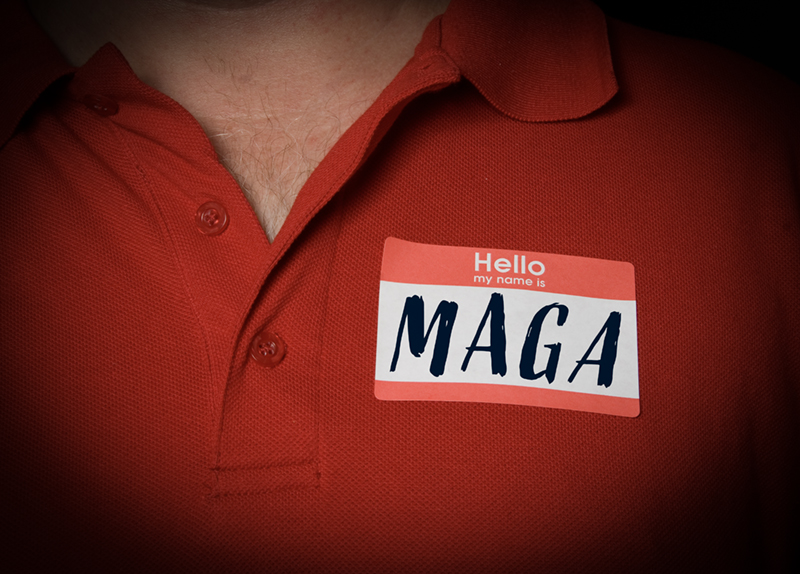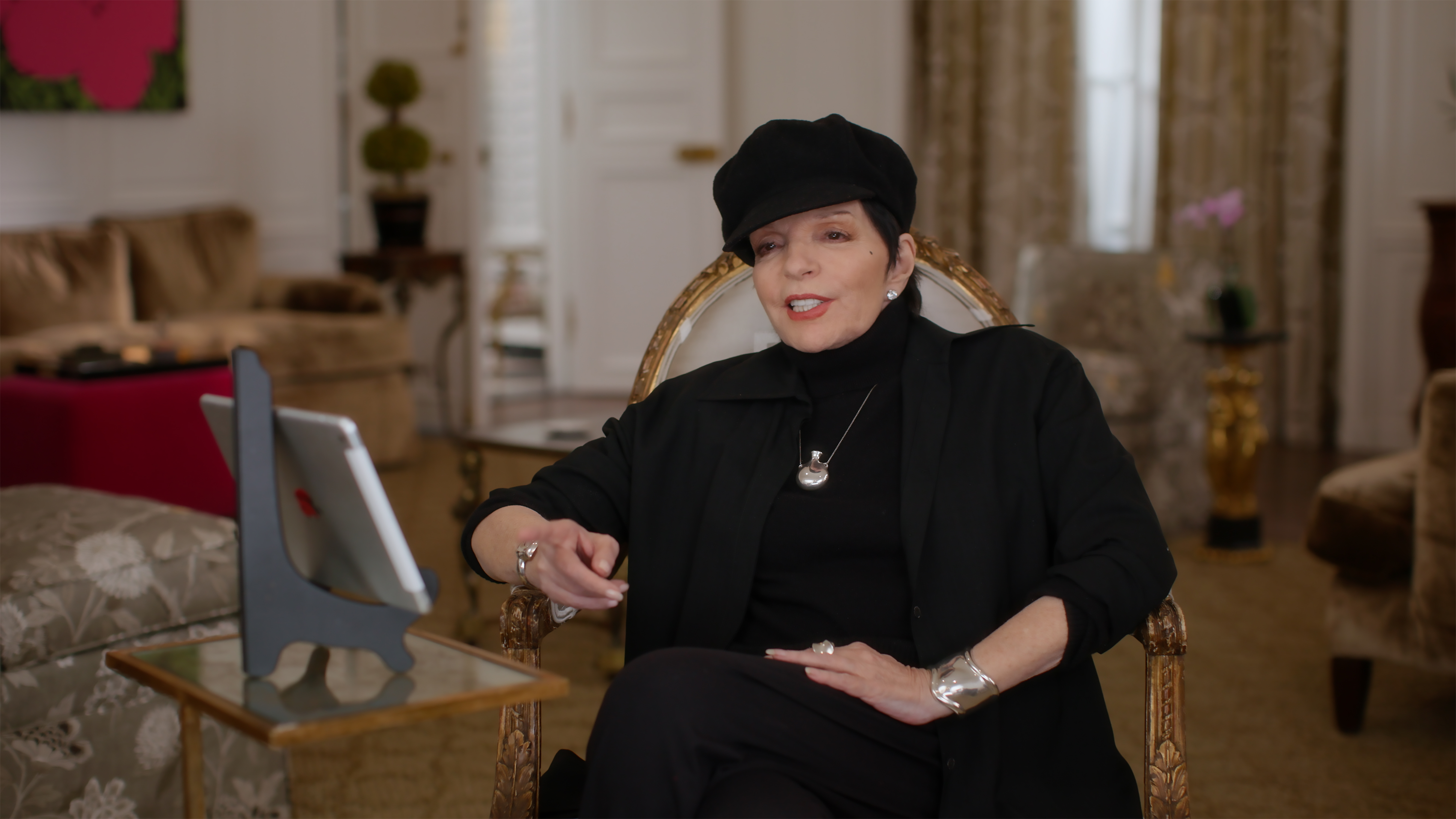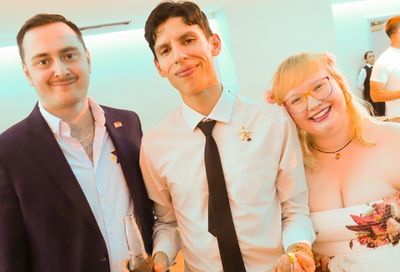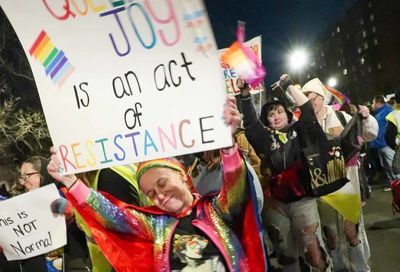Television Review: ‘Halston’ on CNN
"Halston" skirts some of the details along its fantastic voyage into the world of the gay fashion icon

Framed as an American scandal of fashion, fame, and tragedy, Frédéric Tcheng’s playful, occasionally dour documentary Halston (★★★★) begins by introducing a fictional femme mystérieuse (portrayed by Tavi Gevinson) to investigate the rise and fall of the late designer. It’s a bold but unnecessary move, and the film mostly ditches that pretense early on, save for Gevinson’s effective narration of the glamorous life and times of Roy Halston Frowick.
Making its television debut this week on CNN, Halston homes in on the man behind the clothes and the brand name that he signed away, to his later regret. The brand survives him still, having changed ownership hands a dozen times since he died, but Halston the documentary is only tangentially about the house that Halston built. As every legendary 20th-century fashion designer seems to be having his or her day in a biographical documentary (or two), this one is as much about the fame as it is about the fashion. That Halston drove commerce by embracing the cult of personality might be exactly Tcheng’s statement here. It would appear, based on this portrait, that the man would have accepted, and perhaps approved, of the assessment.
Friends and family provide the film’s insider narration of Halston’s rocketing ascent from custom milliner at Fifth Avenue department store Bergdorf Goodman, to the celebrity ruler of a dazzling fashion and fragrance empire. A witty stylist, he launched his rollercoaster ride to superstardom by creating an indelible hat fashion moment for President Kennedy’s 1961 inauguration. A reporter years later asks Halston, “Were you the person who put the pillbox on Jackie Kennedy?” He doesn’t miss a beat in replying, “Yes I was.”
The movie shows an artist, approachable but not humble, who relished creating breathtaking moments, as well as being a part of one. Not surprisingly, Halston dives into the disco-fabulous days and nights of Halston’s ’70s glory. He and Liza Minnelli and Andy Warhol and Bianca Jagger, and their bubbly pal Liz Taylor, were the most popular clique at Studio 54, the hottest party in the world. Halston and his interior decorating buddy Joel Schumacher, not yet a blockbuster filmmaker, also were living it up on Fire Island, and in the swirl of New York cool that was epitomized by Halston’s crew of models — Marisa Berenson, Pat Cleveland, Anjelica Huston, Iman, and Elsa Peretti, among them — who came to be known as the Halstonettes.

Alongside this frolicking, frivolous, drug-fueled fantasy, the film strongly conveys that Halston, a perfectionist, worked nearly as hard as he played. And he worked his staff harder, according to just about all of those former employees who appear. He clearly made enemies among the corporate bosses at Esmark, the maker of mass consumer underwear line Playtex
with whom he struck an eight-figure deal to sell off his fashion line, with the idea being that he’d maintain creative control. The deal did not work out according to Halston’s plans. Opting for the ostensibly objective “fine people on both sides” approach, the movie allows perhaps too much time for Halston’s Esmark nemesis to characterize their conflict.
But Halston is recalled as a champion, although a fallen one, by those who were closest to him. The film proverbially shields its eyes from the ugliness of drug abuse, which took a devastating toll on Halston’s life, and AIDS, which caused his death. Yet there is real talk from Schumacher and others about how dangerous the designer’s drug habit became. Liza Minnelli, the person most closely associated with the man, in life and even today, is interviewed, and keeps it real by not discussing Halston’s personal struggles. Refusing in the most Liza way possible to answer interview questions about the drug use of the man she calls her best friend, Minnelli instead sings his praises. And she brings it back to the fashion with one simple image, gushing, “His clothes danced with you!”
Of course, who better to deliver just such a compliment? Halston has assembled a cast of all the right people — from muses Berenson, Cleveland, and Peretti, to Halston’s loving niece, Lesley Frowick — to explore the film’s fascinating subject. Though only glancingly does it also explore his relationship with artist and collaborator Victor Hugo, Halston’s lover on and off for a decade and a half. There might be another day and another documentary for the equally intriguing tale of Halston and Hugo, but for now, Tcheng has produced a fittingly revealing and flattering take on an American original.
Halston premieres Sunday, August 25, at 9 p.m. ET and PT on CNN, with encores on Saturday, Aug. 31 at 9 p.m. ET and Sunday, Sept. 1 at 2 a.m. ET. Visit www.cnn.com.
Support Metro Weekly’s Journalism
These are challenging times for news organizations. And yet it’s crucial we stay active and provide vital resources and information to both our local readers and the world. So won’t you please take a moment and consider supporting Metro Weekly with a membership? For as little as $5 a month, you can help ensure Metro Weekly magazine and MetroWeekly.com remain free, viable resources as we provide the best, most diverse, culturally-resonant LGBTQ coverage in both the D.C. region and around the world. Memberships come with exclusive perks and discounts, your own personal digital delivery of each week’s magazine (and an archive), access to our Member's Lounge when it launches this fall, and exclusive members-only items like Metro Weekly Membership Mugs and Tote Bags! Check out all our membership levels here and please join us today!


























You must be logged in to post a comment.